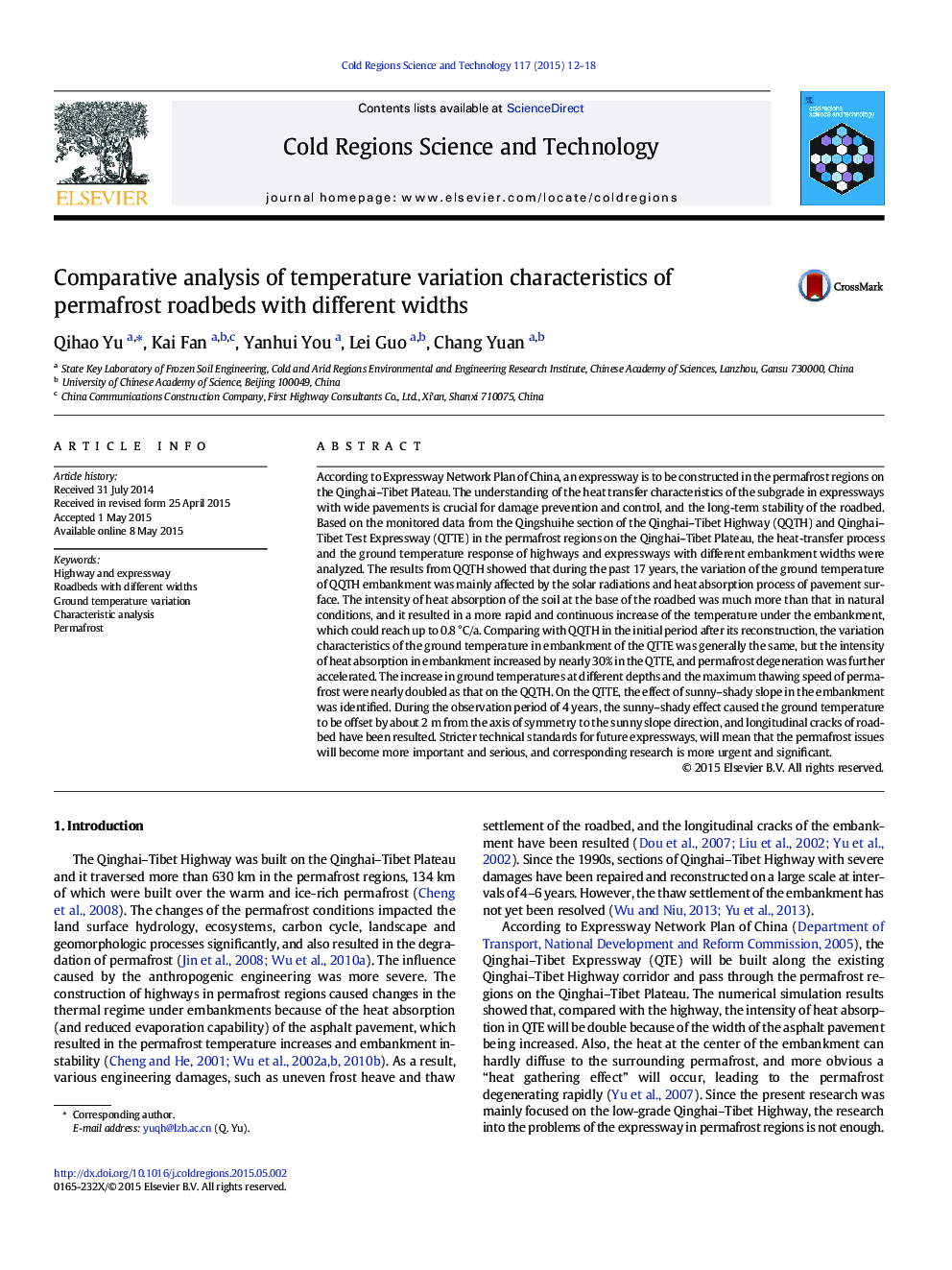| Article ID | Journal | Published Year | Pages | File Type |
|---|---|---|---|---|
| 6426795 | Cold Regions Science and Technology | 2015 | 7 Pages |
â¢Ground temperature in highway roadbed was mainly affected by the solar radiations.â¢The heat absorbing strength in roadbed increased by 30% in wider roadbed highways.â¢Rate of permafrost degeneration were nearly doubled in wider roadbed highways.â¢The sunny-shady effect existed in expressway and resulted in longitudinal cracks.
According to Expressway Network Plan of China, an expressway is to be constructed in the permafrost regions on the Qinghai-Tibet Plateau. The understanding of the heat transfer characteristics of the subgrade in expressways with wide pavements is crucial for damage prevention and control, and the long-term stability of the roadbed. Based on the monitored data from the Qingshuihe section of the Qinghai-Tibet Highway (QQTH) and Qinghai-Tibet Test Expressway (QTTE) in the permafrost regions on the Qinghai-Tibet Plateau, the heat-transfer process and the ground temperature response of highways and expressways with different embankment widths were analyzed. The results from QQTH showed that during the past 17 years, the variation of the ground temperature of QQTH embankment was mainly affected by the solar radiations and heat absorption process of pavement surface. The intensity of heat absorption of the soil at the base of the roadbed was much more than that in natural conditions, and it resulted in a more rapid and continuous increase of the temperature under the embankment, which could reach up to 0.8 °C/a. Comparing with QQTH in the initial period after its reconstruction, the variation characteristics of the ground temperature in embankment of the QTTE was generally the same, but the intensity of heat absorption in embankment increased by nearly 30% in the QTTE, and permafrost degeneration was further accelerated. The increase in ground temperatures at different depths and the maximum thawing speed of permafrost were nearly doubled as that on the QQTH. On the QTTE, the effect of sunny-shady slope in the embankment was identified. During the observation period of 4 years, the sunny-shady effect caused the ground temperature to be offset by about 2 m from the axis of symmetry to the sunny slope direction, and longitudinal cracks of roadbed have been resulted. Stricter technical standards for future expressways, will mean that the permafrost issues will become more important and serious, and corresponding research is more urgent and significant.
